The Speedpaint Mega Set and thus the new 2.0 formula is out this week, so we thought it would be a good idea to post our review again. Speedpaints are loved by some for their unique blending properties. Others hate that the paints reactivate and bleed through subsequent layers of paint. The Army Painter were faced with the difficult task of satisfying both camps and sought the help of three of YouTube’s most popular hobby channels. Is the new 2.0 formula a solid improvement or the worst of both worlds? And are the metallic Speedpaints as underwhelming as some of the promo shots make them to be? I’ll find out in this hands-on Speedpaint 2.0 review.
Disclaimer: I played around with the new Speedpaint Mega Set 2.0 for quite a while now, which The Army Painter sent me free of charge. I’m proud of making honest and unbiased reviews. I’m not on the payroll of The Army Painter or any hobby company, nor am I any of the content creators that contributed to the design of these new paints.
This review is also available in a video format with tons of extra footage, watch it here:
Speedpaint – the journey so far
So before I start this Speedpaint 2.0 review with my honest thoughts on the new Speedpaint formula, I would like to start with a brief recap of why Speedpaint divided the hobby community. The original formula Speedpaint was released on February 22. They were hotly anticipated as they were the first real alternative to Games Workshop’s popular Contrast paints. The Army Painter’s marketing fuelled the hype as they boldly claimed the paints to be even better than the other one-coat paints on the market. And indeed, Speedpaint had a more homogeneous consistency and pigmentation. The flow properties were slightly better than many of their Contrast counterparts. Perhaps most importantly, they were more affordable. However, after the initial YouTube hype died off, painters like Juan Hidalgo and I pointed out that dried Speedpaints reactivate and dissolve when you paint over them with a wet brush or paint.
Shortly after we published our review, The Army Painter reacted with a video of their own. Providing some advice on how to reduce or avoid reactivation, for example by applying varnish before painting over. To me, it’s obvious that The Army Painter didn’t have the reactivation on their radar. Maybe they didn’t notice it during development, time pressure played its part, or they just didn’t think it would bother people (just my speculation, not facts).
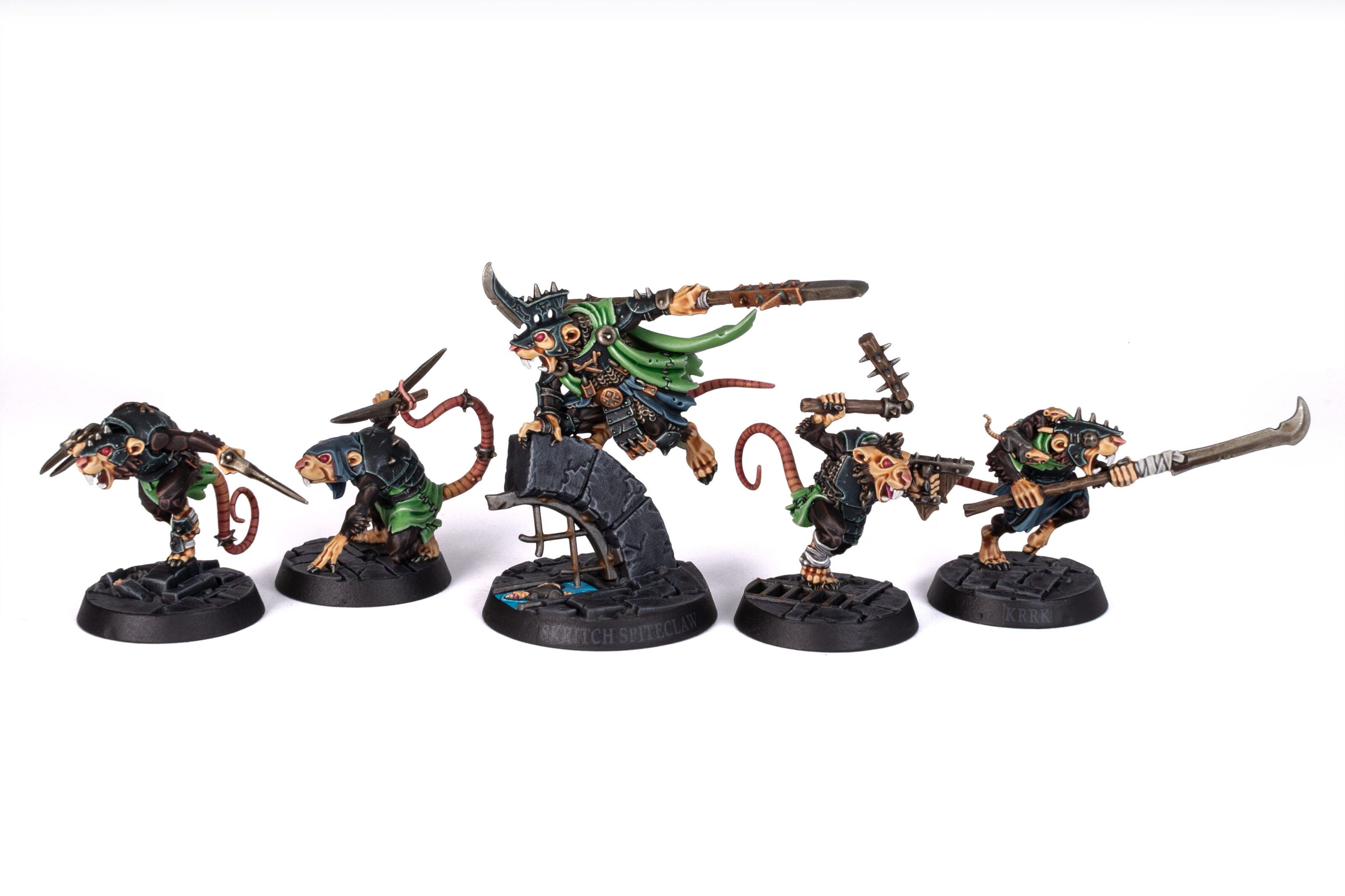

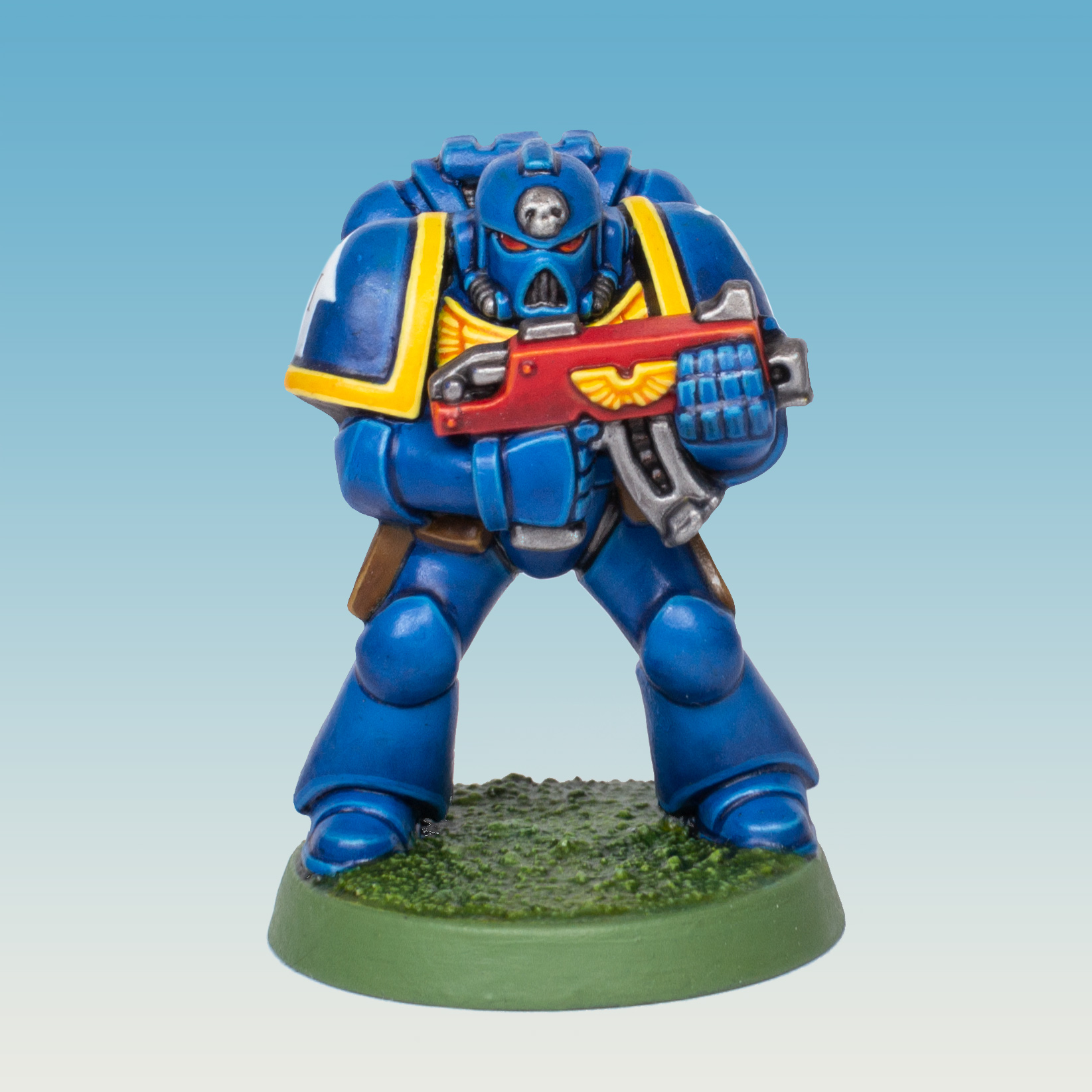

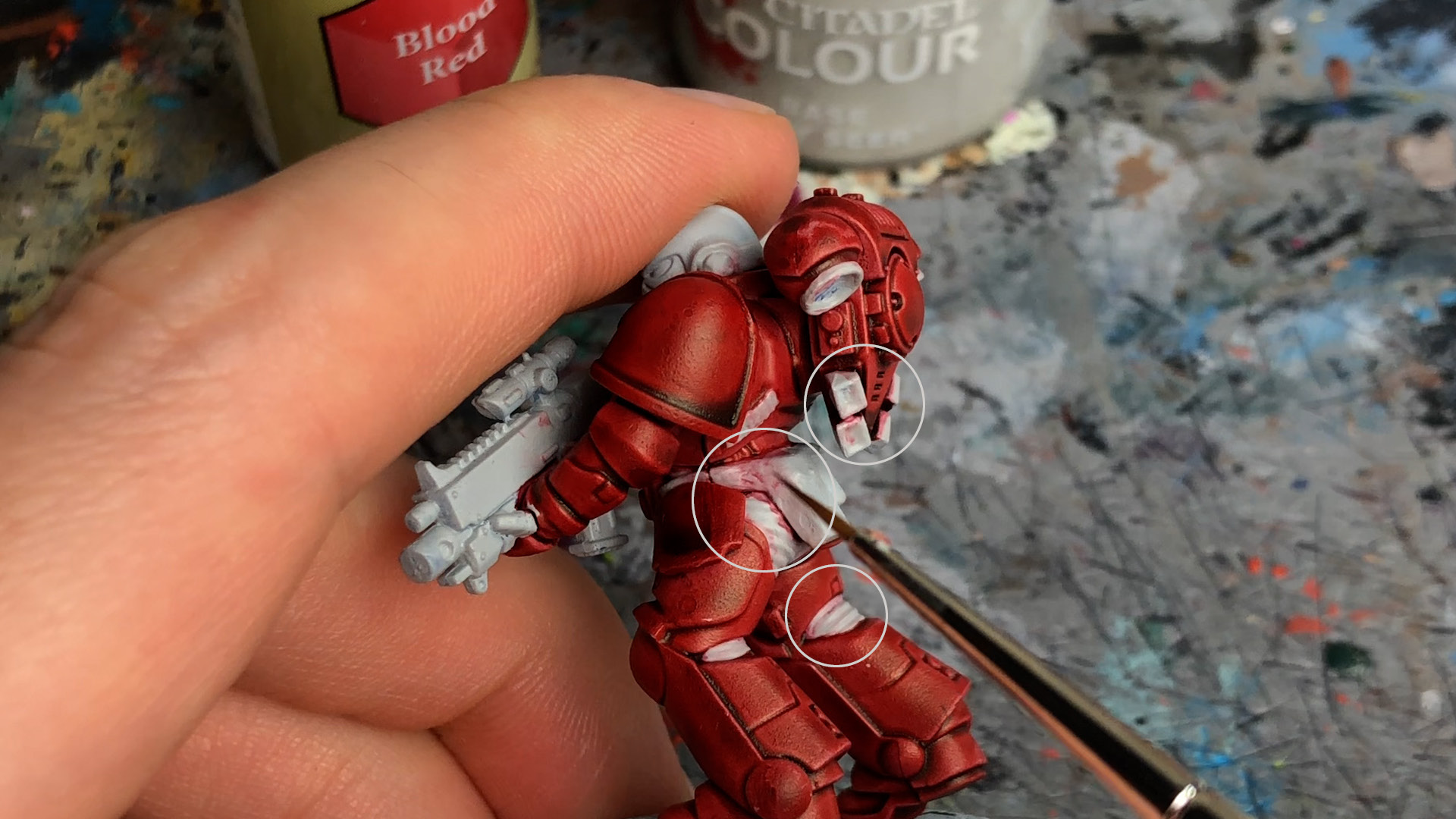

For me personally, the reactivation was and is a big drawback still. I use Contrast paints mainly as a basecoat, and layer and highlight over it, like with the skin of my Spiteclaw’s Swarm. Or I use diluted Contrast for glazing. The gradients on the blue power armour of this second edition Ultramarine were achieved by multiple thin coats of Ultramarines Blue.
But I feel even if you use Speedpaints as a pure “one coat painting solution” as intended, as soon as you need to touch up mistakes with your primer colour, Speedpaint 1.0 kept bleeding through no matter how many layers of paint you applied or how long you let the paint cure. Unless you added a coat of varnish first, which can be a frustrating experience, especially for beginners. This is why I rarely used the original formula Speedpaint and stuck to Contrast and Xpress Color instead, which don’t reactivate once dry. Again, this is just my painting style, so your mileage may vary.
The success story
Despite all this buzz, Speedpaint was a great success. According to The Army Painter it was their most successful product launch ever, and I see why. Unlike Games Workshop, The Army Painter offered a fantastic bundle package with their original Mega Paint Set that contained all of the original 24 Speedpaints. With this “all in one” product, Speedpaint was able to reach new target groups outside the tabletop community. Board gamers who never painted a mini before but wanted to splash some colours on their board game minis. Also, people started to use the reactivation in creative ways that I honestly did not predict, like for blending effects similar to wet blending. Dana Howl, who was also involved in the development of Speedpaints 2.0, made a very inspiring tutorial about this.
And yet, the community has divided into those who welcomed reactivation as yet another tool in their painting arsenal and those who prefer their one coat paints to be stable and not reactivating. Let me know in the comments which camp you are. The Army Painter now had the difficult task of responding to the criticism and reconciling both camps.
Speedpaint 2.0 review – the new formula
To come up with the 2.0 formula, The Army Painter collaborated with some well-known painters from the YouTube community. A brilliant approach to designing products in my opinion. Goobertown Hobbies, Dana Howl, and “Watch it paint it” were asked to provide their input, and even come up with a bunch of new colours themselves. Speedpaint 2.0 contains a more stable acrylic resin which forms a stronger bond. It is promised to no longer reactivate after a curing time of about 2 hours depending on the environment. Which means there should be a time window of at least 2 hours for blending and reactivation. Or shouldn’t it? Spoiler: yes but no.
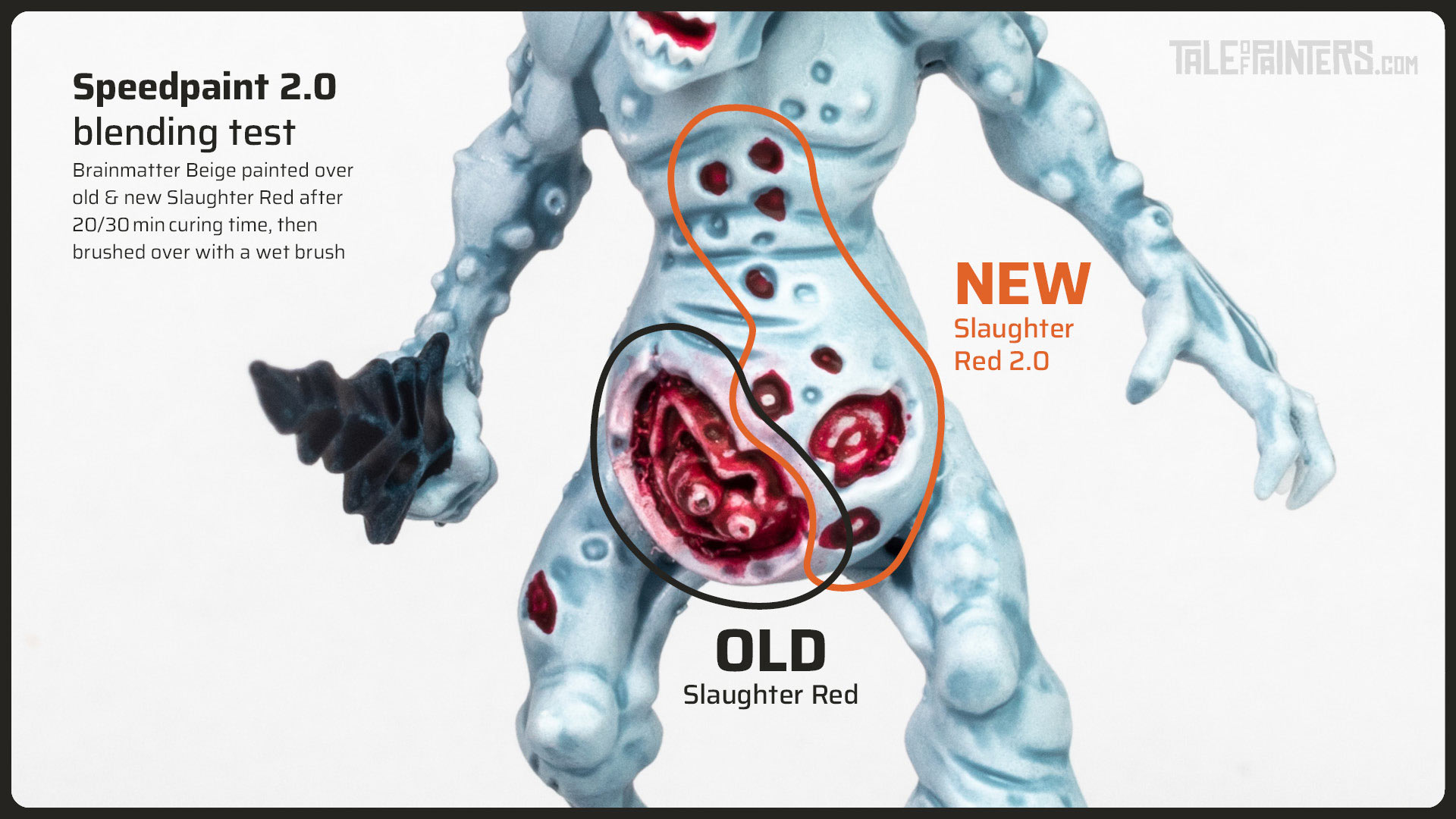
So let’s compare the original Speedpaint in this Speedpaint 2.0 review. On the Plaguebearer’s wounds, I applied Slaughter Red in both the old and new formula. The shade of red is identical. The flow properties of the new Speedpaints are also just as good as their old versions, which I can confirm after some more testing. But what about reactivation?
And the answer to that is a bit tricky. The new formula is indeed more stable. After 20 to 30 minutes, I already have a hard time dissolving the paints with a wet brush. This is good, but this also means that the new resin pretty much removes the ability to reactivate the paint for blending. On the left side of the Plaguebearer’s guts, I painted Brainmatter Beige over the old Slaughter Red and go over it with a damp brush. By reactivating the red pigments and the bleed-through effect, this creates a quite soft transition. The new Slaughter Red is completely different. I only let the paint dry for about 20 minutes, but the red pigments hardly dissolve at all. The bleed-through is almost non-existant.
More sampling
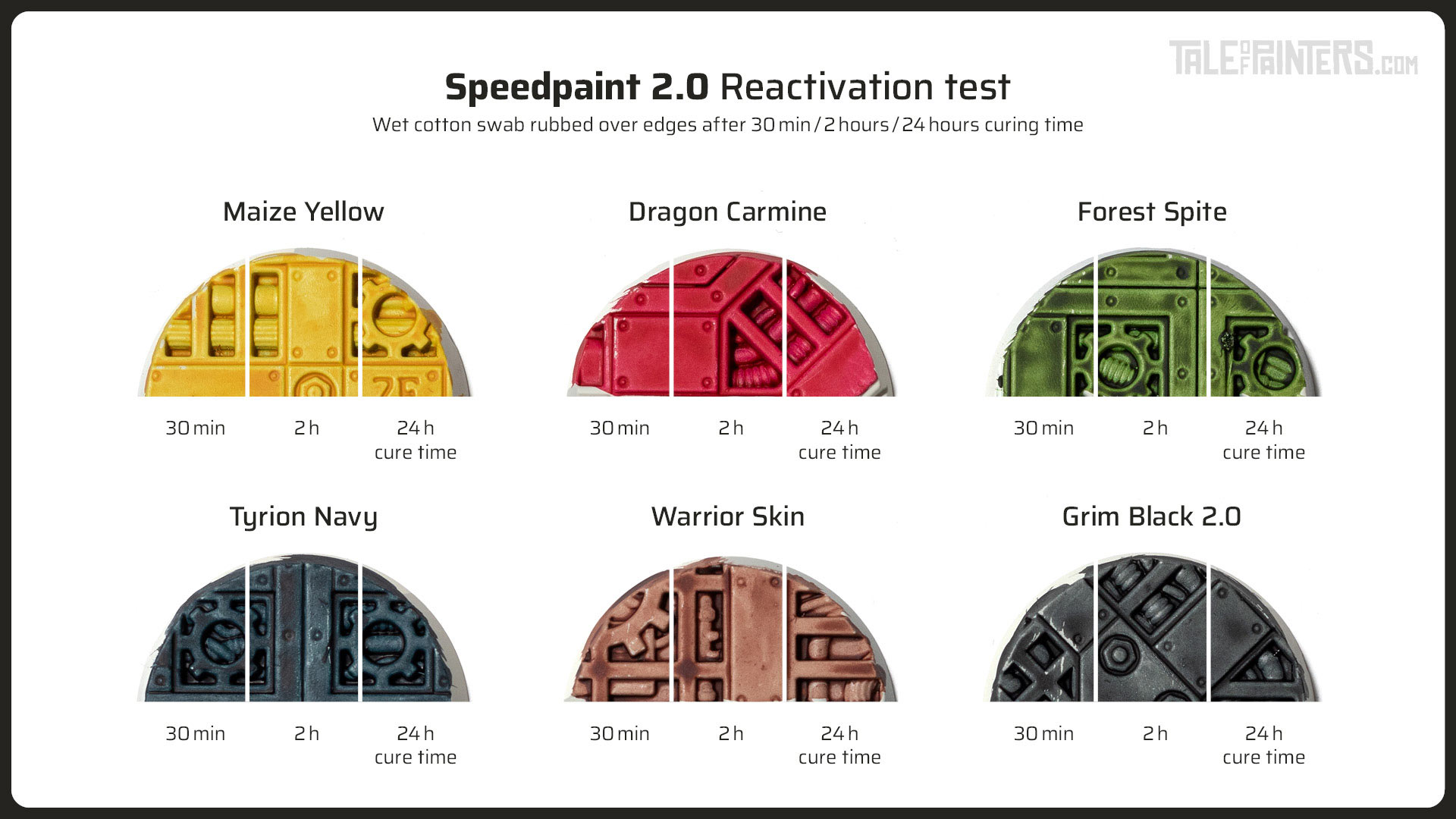
For this Speedpaint 2.0 review I took a few more samples from the new range. I tried to reactivate the paints after 30 minutes, 2 and 24 hours.
For this, I rubbed the upper half of the bases with a wet cotton swab to take away the paint from the edges, aiming for an easy highlight effect. As you can see, after 30 minutes, yet despite rubbing hard, I could barely get any paint off the edges of the details. Though a slight discolouration was visible on the cotton swabs. In some areas, I was able to scrape off the paint, but that was more due to the mechanical stress. After 2 hours of curing time, there is even less discolouration going on. Except for a few colours like Tyrion Navy. After 24 hours, reactivation is almost a non-issue, though I can still detect minor discolouration for some of the colours.
Due to the higher stability, I was also able to glaze several layers of Speedpaint thinned with Speedpaint Medium, without previous layers of paint dissolving and smearing.
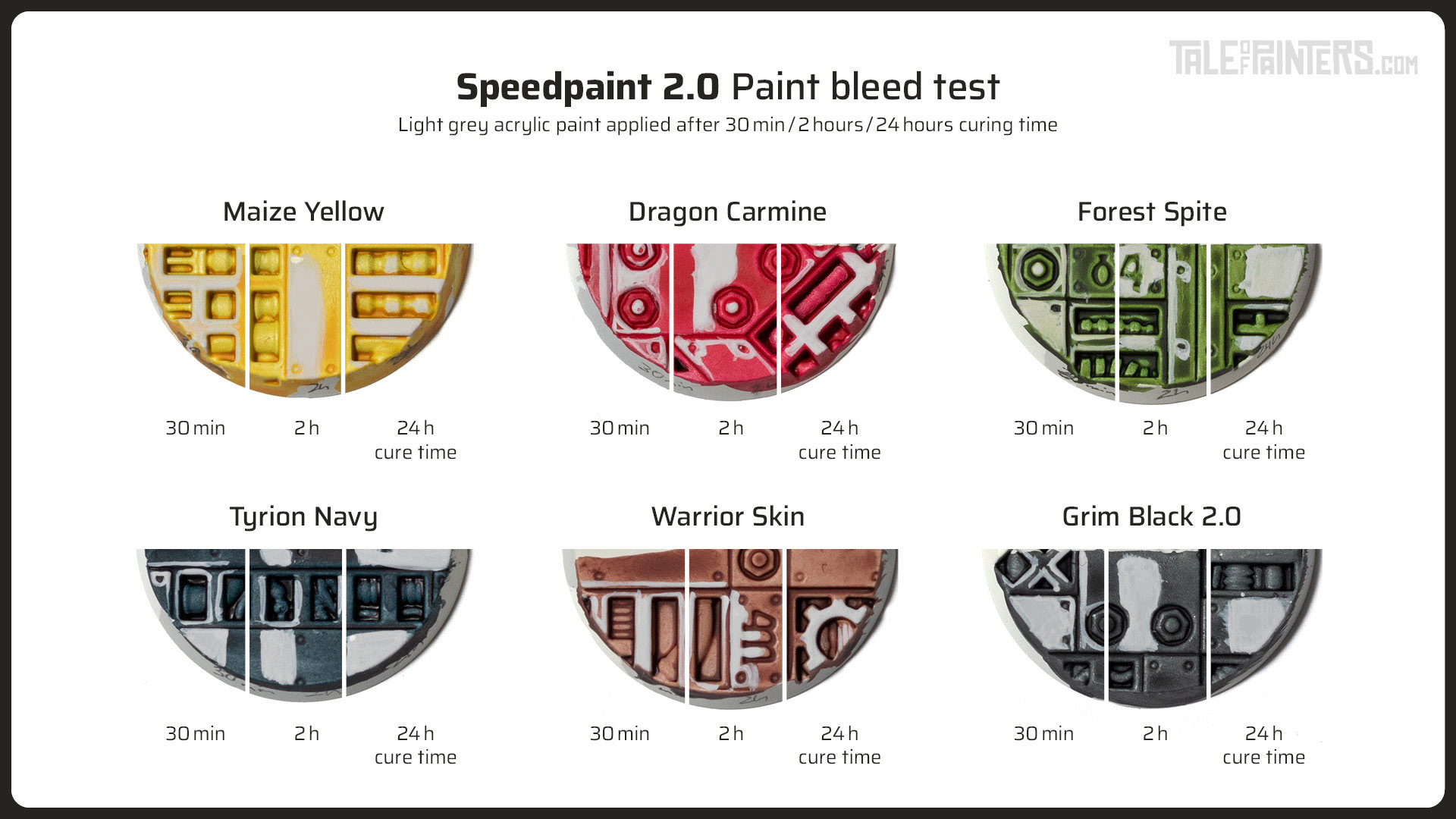
With the resin more stable now, I’m happy to say that the bleed through effect is all but gone. On the lower half of the bases, I painted over with light grey acrylic paint, again after 30 minutes, 2 and 24 hours. Around the 30 minute mark, some of the new Speedpaints still bleed through light layers of paint. For example Dragon Carmaine, Maize Yellow and Forest Spite. It’s much more faint than with the original formula, but it is still present. At least on some of the more vibrant colours such as the red, yellow, purple, and green. However, after a longer curing time of about 2 hours, the bleeding stopped.
Speedpaint 2.0 in practical use
Now, these little experiments are all well and good, but what does that mean for practical use? I have to say that unless you paint over with a very light colour, you will hardly notice any reactivation with Speedpaint 2.0. Even then, unlike the old Speedpaints, there is no varnishing needed. One or two additional layers of paint will pretty much remove the bleeding completely. On the Stormcast’s robes I layered and highlighted over Speedpaint that cured for about 20 minutes. As the highlight colours are quite similar, bleeding is not an issue at all.
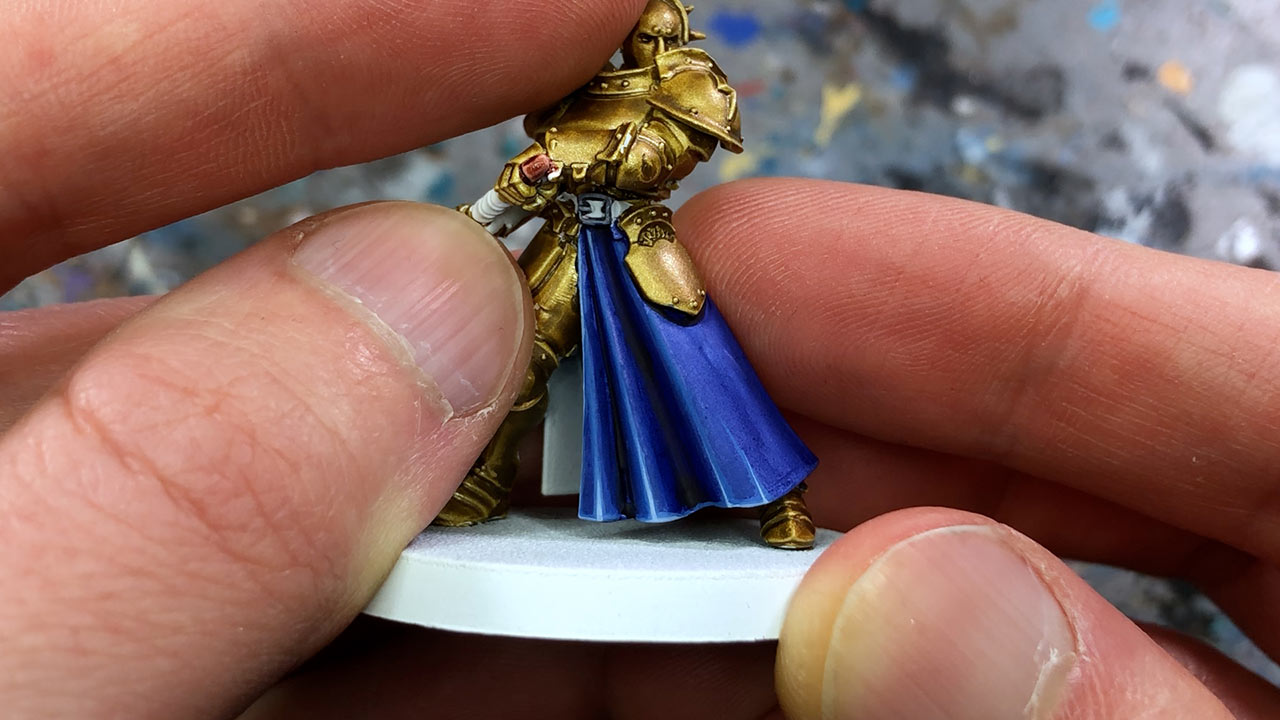
This is good news for those who were unsatisfied with the stability of the original Speedpaints. But no matter what The Army Painter says about a 2-hour working window, I’d say that the reactivation-caused blending capabilities that the old Speedpaints had are pretty much gone.
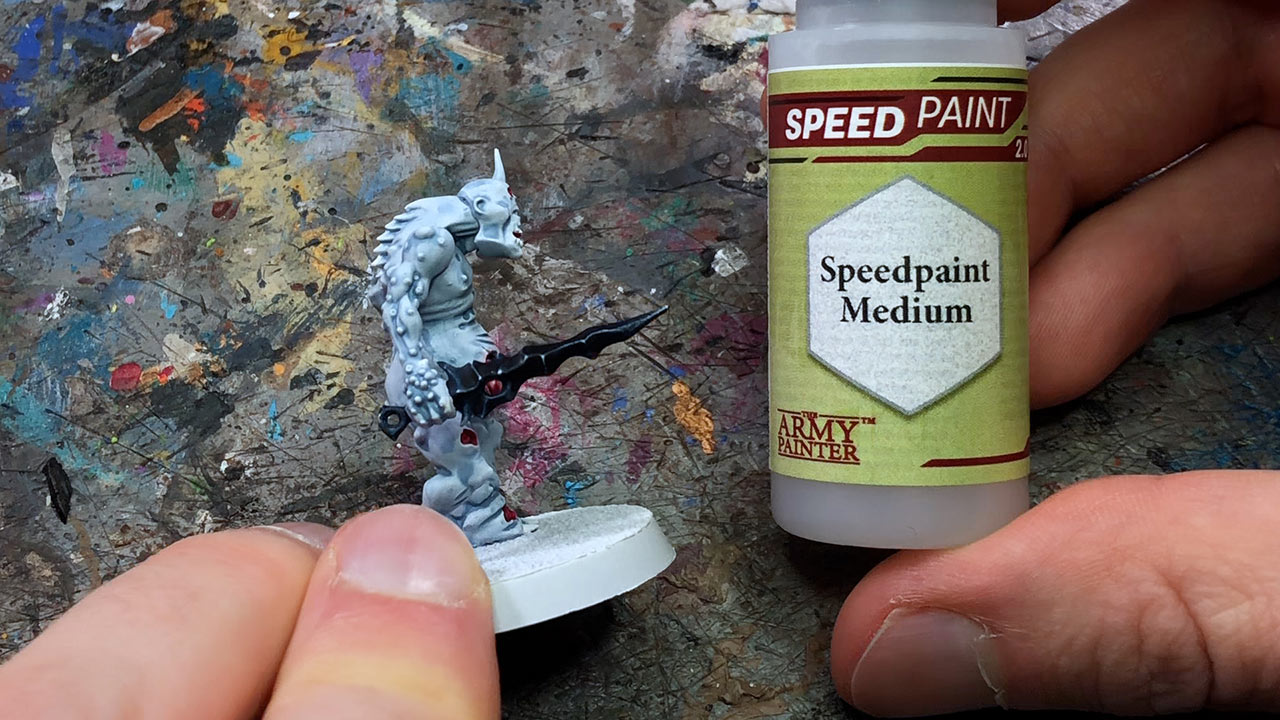
Now, what you CAN do to increase reactivation is to use Speedpaint Medium instead of water. I soaked a cotton swab in Speedpaint Medium and rubbed it over the edges of the Plaguebearer’s sword to remove the paint and enhance the highlights. This works better than just using water. But I feel it’s still a bit more difficult and tedious to pull off than with the old formula. Maybe some other painter or YouTuber can find a better way to make the blending work. Please let me know in the comments about your experiences.
The expanded palette
Apart from the changes to the formula, the Speedpaint range has been expanded from 24 to a whopping 90 colours. That’s 28 more colours than Contrast has to offer! They also feature metallic one coat paints, which are an industry-first. I’ll share my thoughts on the metallic Speedpaints below, but first, let’s take a look at the colour palette.
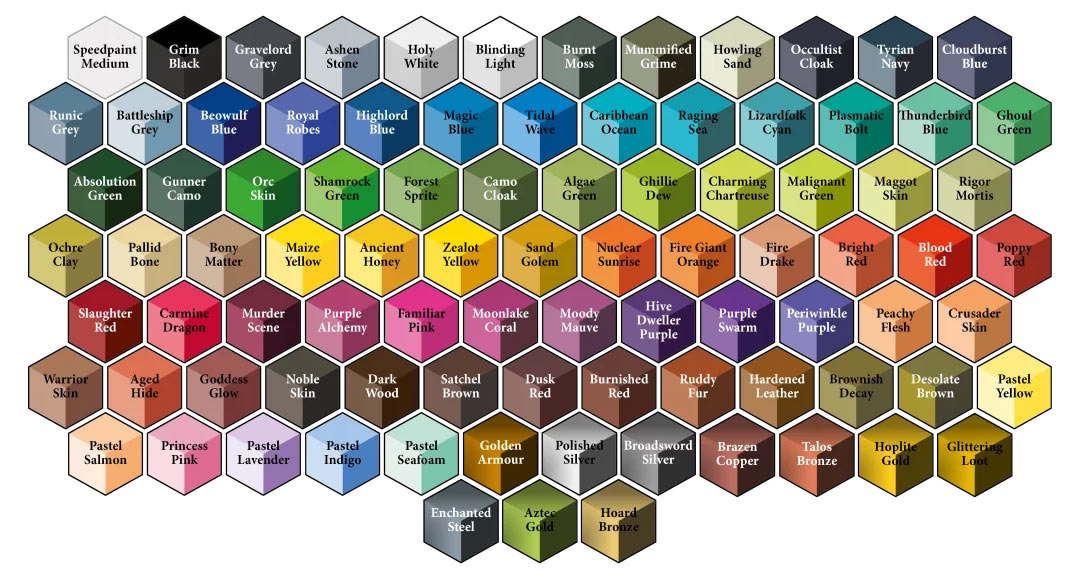
As you can see, there is more of everything, plus 6 brand-new pastel and 10 metallic Speedpaints. I really like all the new greys, browns, and the expanded selection of skintones.
To complement my Speedpaint 2.0 review, I made a hand-painted colour swatch of all 89 colours on white primer. Professionally photographed under neutral 5500K light.
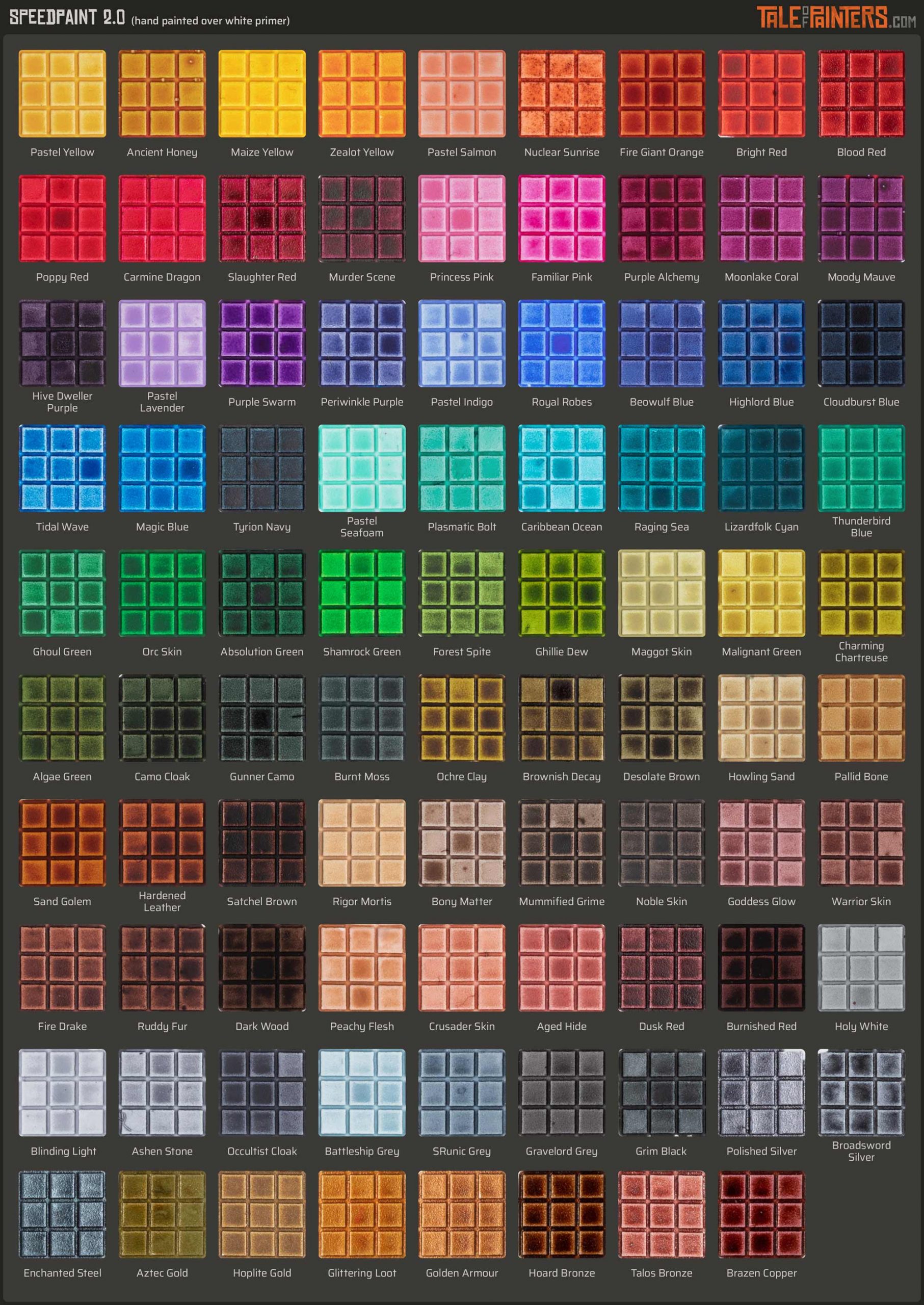
I also have a comparison chart with all major “one coat” paint brands such as Citadel Contrast and Vallejo Xpress Colors:


This hand-painted swatch is available in my Patreon shop for a small donation (or by becoming an Autarch tier member). I also have swatches for Citadel Colour, Vallejo Game Color, Warpaints Fanatic, and Two Thin Coats – all cross-compatible with each other so you can compare colours across different brands. Check out my shop for details.
The new Speedpaints are initially available in the Mega Paint Set 2.0, which contains 50 paints, out on April 22 in 2023. A complete set and metallic paint set are following soon thereafter. In Summer there will also be a new starter set, and a Most Wanted set, which will have all of the original 24 Speedpaints but with the new formula.
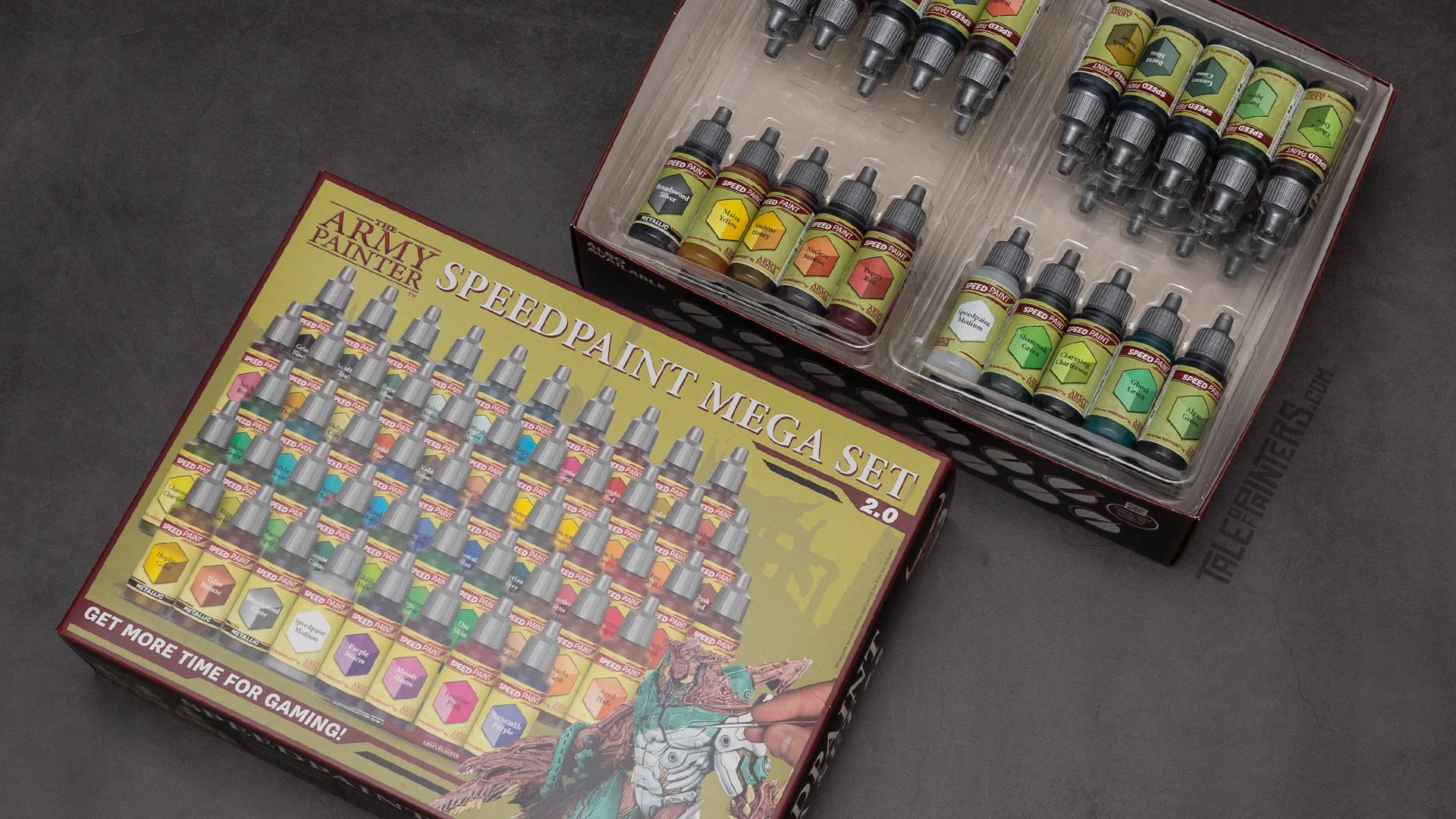
Speedpaints 2.0 can be recognised by their 2.0 label. Keep in mind that most paints in the first production run still have the old design. Further production runs are set to receive the new labels, which also feature more practical naming conventions.
Metallic Speedpaint 2.0 review
Thank you for scrolling through my Speedpaint 2.0 review to this point. Now, the moment you waited for: metallic Speedpaints. These are… something. I was able to review the three colours from the Mega Set, but there’ll be 10 in total. I have to admit, I was a bit underwhelmed when I saw the promo shots, so I was eager to give them a try.
Consistency-wise, they are quite thin, similar to pre-thinned airbrush metallic paints.
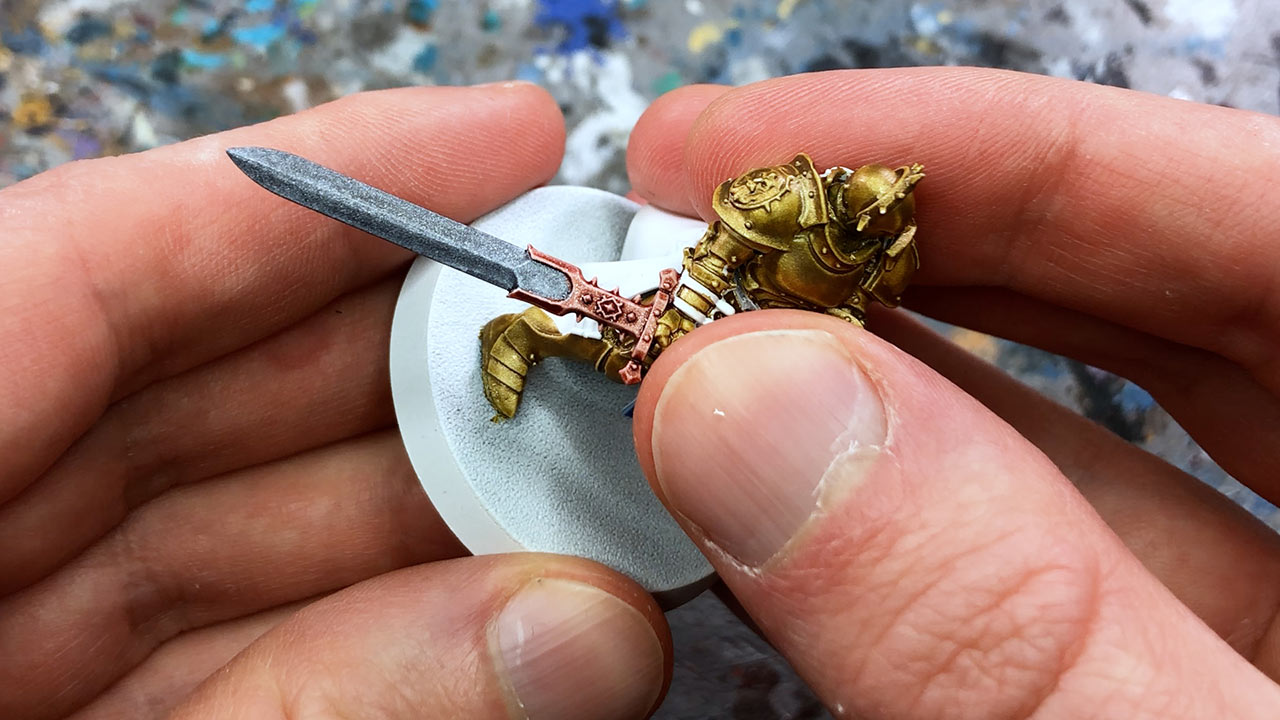
Hoplite Gold is my favourite, it’s more opaque than the other two, but still darkens in the recesses. As the paint pulls from the edges, the white primer shines through which creates a subtle highlight effect. It is a quite muted gold tone though, but the complete range has a few other gold tones I’m very eager to try. Broadsword Silver is a dark cool silver. It has less of a tint than the gold, I think it’s okay but not as good as the gold. Talos Bronze is more like a reddish copper tone and even more transparent, so I recommend adding a second coat. Unfortunately, this paint has a really weird sparkle effect. It looks okayish in real life, but under my bright studio lights the silver flakes stand out as if the pigments haven’t been blended properly.
And what about reactivation? I would say it’s similar to the regular Speedpaints. After 30 minutes the paint is very stable and can hardly be dissolved with water or wet paint, but Speedpaint Medium allows you to carefully remove the paint.
My thoughts on metallic Speedpaints
I think, for what they are, within their limitations, they have potential. Would I personally use them? No. Maybe the gold, but not for the intended use. Do you get a better result with regular metallic paint and a wash and/or drybrush? Yes, definitely. But for the target group of “non-painters” who just want to quickly colour up some minis, they are… decent. They are quick and easy to apply and if you don’t have super high expectations, they’ll do the job.
Even if you don’t think you’re the best painter in the world, a painted miniature always makes for more immersive gameplay than an unpainted one and is something to be proud of. And if you think metallic one coat paints can help you achieve that, then by all means, go for it. And with an additional quick drybrush, you can add some extra depth if you feel like it.
Value
It’s true that Speedpaint is more affordable than Contrast. Speedpaints come in 18ml dropper bottles with pre-installed agitators. Which is the same amount as a pot of Contrast but at only 2/3 of the cost. The RRP for a single bottle is £3.45 / 3.99 € / $4.50. So about the same as Vallejo Xpress Colors. The Army Painter also planned quite a few box sets, which are a bit cheaper than buying each colour individually.
Speedpaints become even more affordable when you get them from our partner stores Wayland Games, Element Games, Firestorm Games, and Taschengelddieb, which offer additional discounts of 10% over RRP.
Now if you’re looking for other alternatives for Contrast or Speedpaint then the new Xpress Colors from Vallejo or Green Stuff World’s Dipping Inks might be worth a look. You can find reviews for Xpress Color here, Dipping Inks here, and my thoughts on the updated Contrast range here.
7.5Score
Pros
- Widest range of colours of any one coat paint range
- Vibrant and as richly pigmented as Contrast
- Homogeneous consistency, matt finish, settle more evenly than most Contrast paints
- Affordable 18ml bottles with pre-installed agitators
Cons
- Reactivation is reduced, but not removed completely
- Reactivation-based blending capabilites much more limited than before
- Metallic Speedpaints are so/so
Final Verdict
Personally, as I’m one of the people who prefer their inks and one coat paints to be stable, I can see using Speedpaint 2.0 more often from now on, at least some of the more unique colours to fill the gaps in my “one coat” paint collection. Nevertheless, I still have the feeling that Speedpaint 2.0 is sitting between two stools and does not know to whom it wants to cater to – those that hated the reactivation or those who appreciated it. In my original review I gave Speedpaints a 7.5, which in retrospect probably should have been more like a 7. For Speedpaints 2.0, I'm sticking with the 7.5, perhaps with a slight tendency towards 8.









I really feel like a better explainer is needed for speedpaints vs contrast paints.
I’ve found the Army Painter Speedpaints to be awesome with flesh, folds, animal fur and intricate detail, but horrible for flat undetailed surfaces. Great for tyranids, skaven etc, terrible for Space Marines.
They are a tool, and a good one, but you have to have understanding of what it is you are painting to know which paint is beat suited.
I don’t think it’s entirely fair to name ‘Reactivation is reduced, but not removed completely’ a con and then immediately after that say ‘Reactivation-based blending capabilities much more limited than before’ is also a con. That’s… wildly contradictory to me.
Some people liked to utilize the reactivation of the original formula, while others were annoyed with it. I tried to cater to both “target groups”, but yes, it’s a contradiction. The point I was trying to make is that the new Speedpaints haven’t gone all the way to remove reactivation, even if it’s hardly noticeable in practice.
I really love your reviews and the colour charts are super handy.
When can we expect to see the complete chart for the entire Speedpaint 2.0 range?
All the best, Andreas
ASAP in the next week(s). Have them here, just need to find time to photograph them!
That’s great news! I’ve been checking your site multiple times a week for that post.
Keep it up
Yes please, been waiting too, thanks for the hard work, love to compare your charts so I can mix and match brands and not have duplicate colors. Thanks again!
Great review, thank you. I purchased the set fortunately taking advantage of Wayland Games prices. I have tried a few of the colours other the last week, and tbh a little disappointed. I experienced a lot of reactivating with SP 1 and looked forward to the advantage of SP with out this with SP2. Although not experienced any reactivating I have noticed some what I can only call coverage blips, hard to describe but applying to a sprayed white printer the SP2 when dried has pulled away totally in some areas. For example the front edge of a kepi, although painted the edge when dry became white like I hadn’t painted it. I also noticed that once dry certain colours really didn’t provide the depth of colour or shading I expected (compared to SP 1). So I have had to apply a second coat to achive the look I wanted. May just be me but thought I would share. Also I wonder why some of the most useful colours in the SP1 box didn’t make their way in to this box.